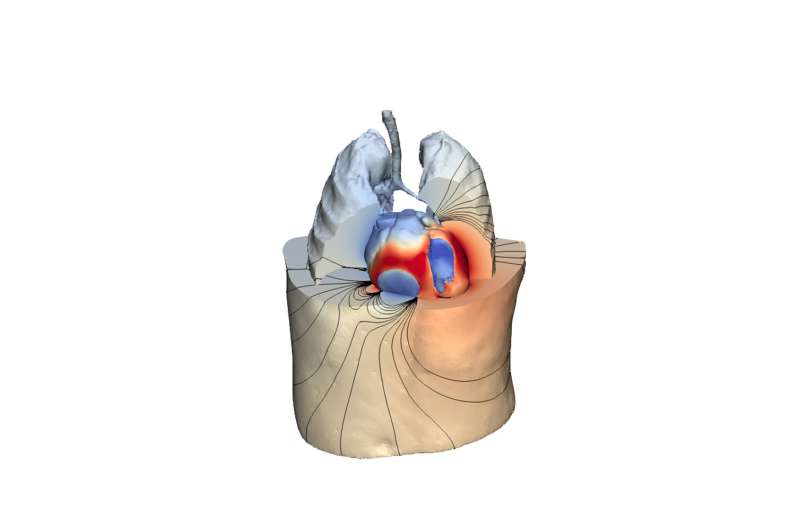Cardiovascular diseases: New computer model improves therapy

Using mathematical image processing, scientists at the BioTechMed-Graz research cooperation have found a way to create digital twins from human hearts. The method opens up completely new possibilities in clinical diagnostics.
Although treatment options are constantly improving, cardiovascular diseases are still one of the most frequent causes of death in Europe. The success of the treatment varies from patient to patient and depends on the individual clinical picture, as Gernot Plank, researcher at the Institute of Biophysics at the Medical University of Graz explains using an example: “For example, pacemaker therapy is not successful in about 30 per cent of cardiac patients who have had a pacemaker implanted for mechanical resynchronization of the heartbeat.”
In order to be able to rule out such interventions in advance, Plank has developed a computer model together with the mathematicians Gundolf Haase and Kristian Bredies from the University of Graz and computer scientist Thomas Pock from the Institute of Computer Vision and Representation at Graz University of Technology, respectively, with which doctors can pre-simulate the optimal therapy and dramatically improve the success of treatment.
Digital one-to-one models
The researchers use diagnostic data from MRI, ECG and other heart examinations of the person to be treated. Imaging algorithms put together a digital image of the patient’s heart from this data material. This customized model ultimately provides a wealth of information that helps to understand the individual clinical picture and to run through various therapeutic scenarios.
Thomas Pock explains the challenge behind it: “To simulate such a heartbeat in the computer, you have to calculate millions of variables. This requires complex mathematical procedures, special algorithms and special hardware that can perform billions of computing actions per second.”
Method is ready for use
The developed method is so sophisticated and automated that anatomically correct digital twins of patient hearts can already be routinely produced in a clinical setting. In a next step, the researchers want to further improve the technology and enable fully automatic adjustment of all functional aspects of the heartbeat. “This requires further efforts in basic research, especially in those areas of machine learning and artificial intelligence (AI) that allow a high degree of personalization,” explains Pock.
Focus on further development
A very promising approach is based on the latest AI methods for optimal control and focuses on the wave propagation in the heart, which is controlled by the alignment of the heart muscle fibers. The consortium wants to implement this approach in cooperation with Cardiocentro Ticinio (center for computer-assisted cardiology, Lugano) in a new research project and try to incorporate the control elements into the model using machine learning techniques in such a way that the simulated heartbeat comes as close as possible to the real heartbeat.
Source: Read Full Article



